An apartment complex conjures an image of rows of buildings, with amenities like swimming pool, play areas, manicured lawns and alien trees. These complexes are considered ‘concrete jungles’ and are not really known for their biodiversity.
But the residents of SJR Redwoods Apartments have broken this myth – they have converted their premises into a food forest. This apartment complex off Sarjapura Road has 152 flats, and is situated on a five-acre property of which two acres is common land.
How we created a zero-waste food forest
Our garden used to generate six tonnes of waste per month, which had created a mosquito and pest problem. Our solution was to ‘reduce, reuse, recycle’ waste. Here’s how we went about it.
Step 1 : Identify areas for setting up compost bins: We created four compost zones. The bins were built using waste materials such as old doors and mosquito mesh, which would otherwise have ended up in a landfill or on the roadside.
Step 2 : Composting: Leaf and other garden waste were put in the compost bins, and mulch added. Mulching regulates soil temperature, and ensures nutrients aren’t lost. Each compost zone yields 100 sacks of compost every quarter.

Step 3: Community engagement: Workshops were conducted to understand soil conditions, and planting styles such as Kokedama, a Japanese bonsai method where the plant’s root system is wrapped in moss and bound with string.
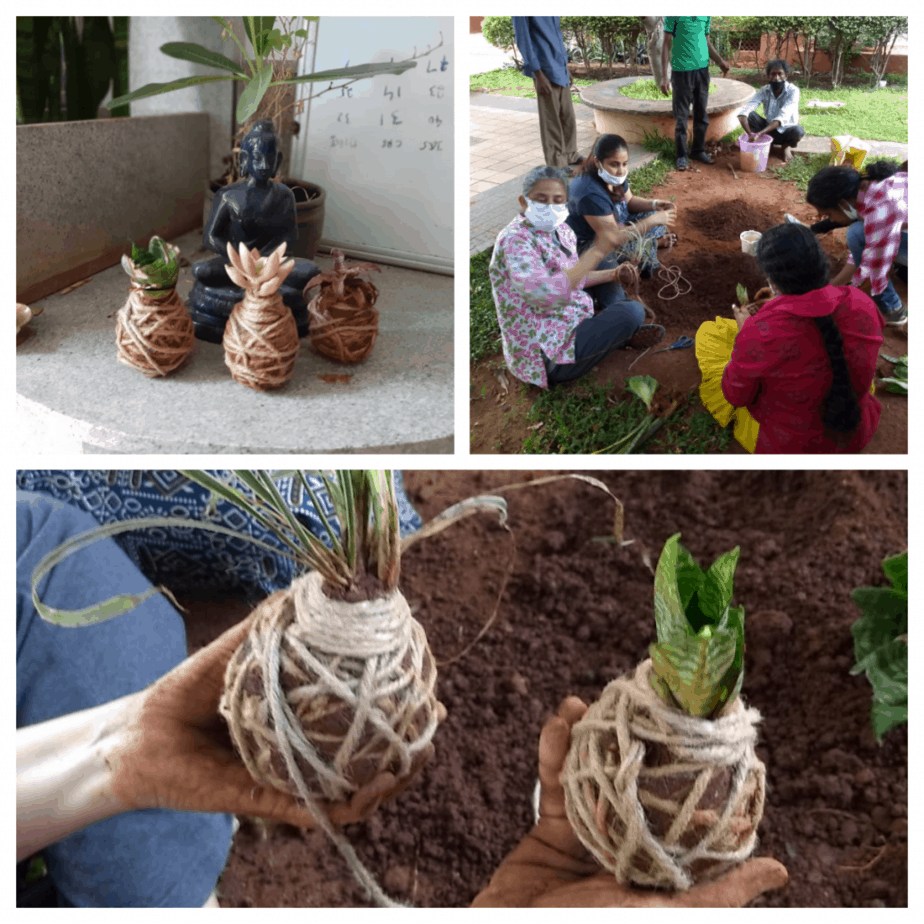
Step 4: Planting native species: We identified native local flora, and then undertook a three-layered farming experiment which would allow trees, creepers and shrubs to co-exist. In this farming method, the base of the trees are lined with herbs/shrubs, along with vines/creepers. This contributed to soil rejuvenation, and enabled diverse plant varieties to be propagated in a small area.
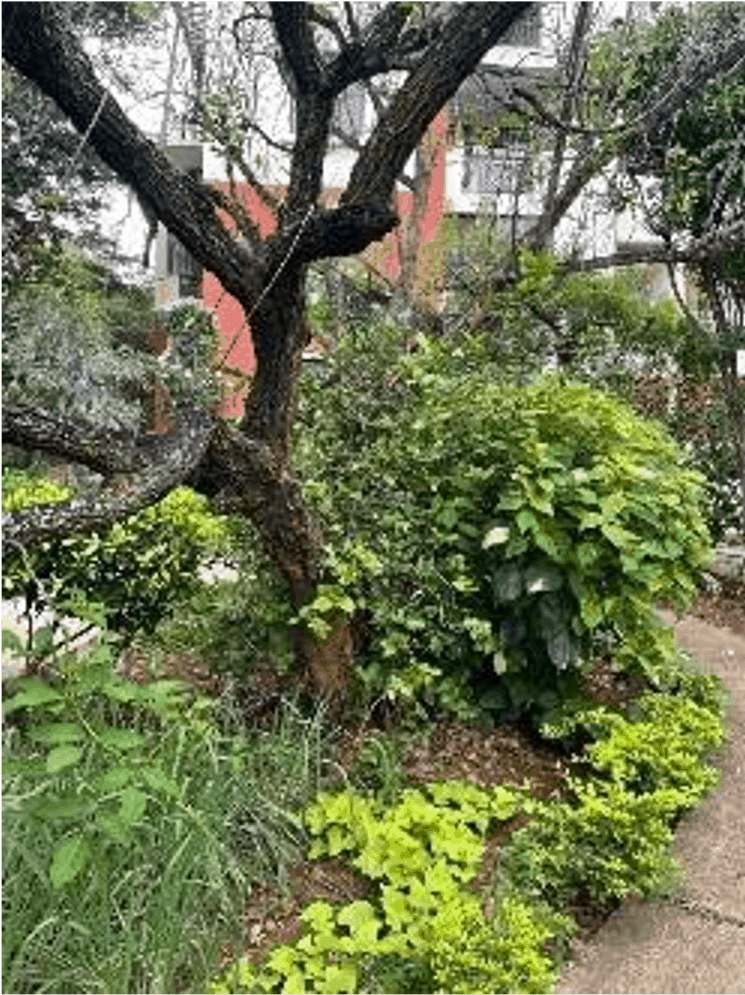
Following are the species we planted:
| Fruit trees | Other trees | Herbs | Vegetables | Flowering plants |
|---|---|---|---|---|
| Papaya Banana Guava Sitaphal Mango (yet to yield) | Neem Lakshmi taru Jamoon Christmas tree Tabebuia Cherry tree Honge Temple tree Sampige Bottle brush Varieties of palms and bamboo Sugar cane (will be harvested for Sankranti, and will suffice for half the community) | Thulasi Mehendi Ajwain Bhadra Mushti Keelanelli Giloy Nagadale Balloon vine (good for the knee joint) Mehendi Thai basil | Chillies Yam Sweet potatoes Spinach – Malabar and Ceylon Tomatoes Bitter gourd (seasonal) | All varieties of jasmine Sunflower Rose Red hood Spatika Song of India Miniature umbrella plant Tulips Varieties of Hibiscus Parijatha Aparajitha, and more… |
Instead of using chemical-laden pesticides, we followed organic treatment using a mixture of neem, eucalyptus, cow dung and some herbs that keep pests at bay. Fogging was reduced to a bare minimum.
Read more: How 15 citizens are building about 8000 sq m of forests in Bengaluru
Sameer Shisodia, Kavitha N Kishore, Matilda were core committee members of the gardening team. Thirty other residents – including key members such as Shalini Jain, Shashikant and Indu Iyer – actively participated and gave wholehearted support.
Sameer says, “Over the last few years, a bunch of us have been doing a lot of planting at the Lower Ambalipura lake with the help of the lake gardener. That area has truly become diverse and food-rich. Last year, we felt that perhaps the apartment too should adopt such an approach. We pitched the idea to the managing committee and they liked it. Many volunteers joined in and led various efforts.”
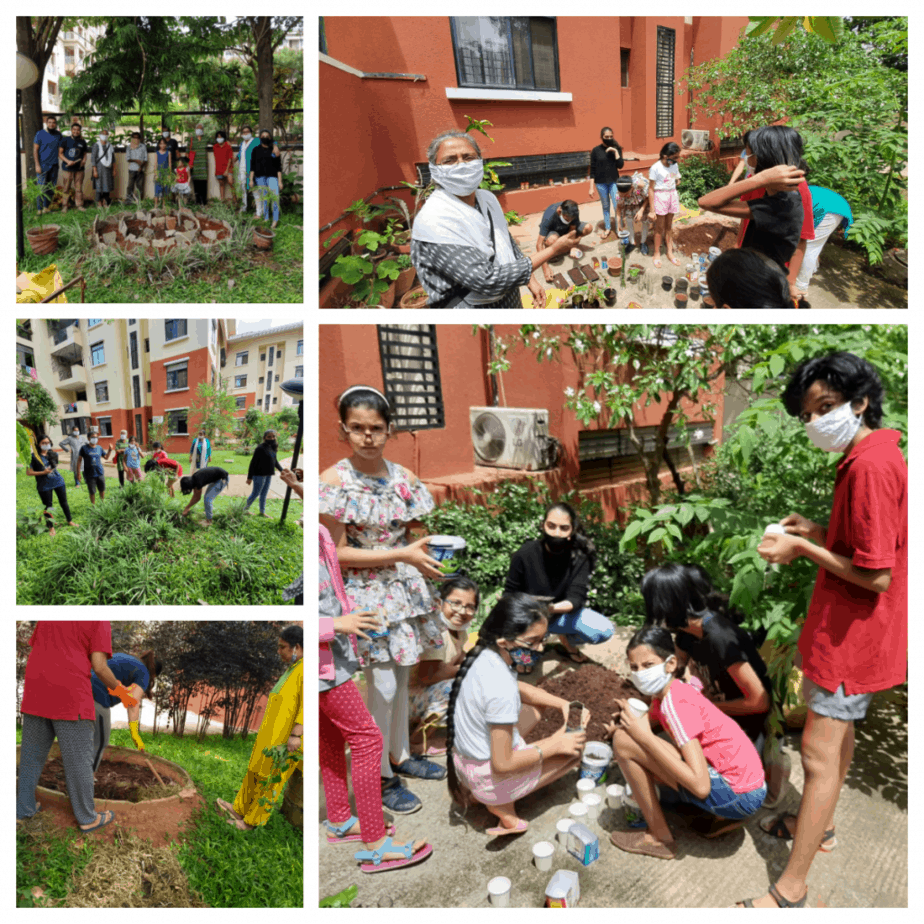
The benefits
Monetary:
- Saving money on buying bins, since we used recycled materials to create them
- Saving the cost of transporting approximately six tonnes of waste per month. This waste earlier had to be transported by three tractors, at the cost of Rs 3,000 per tractor
- Saving around Rs 5,000 per month on compost
Overall, we estimate annual savings of Rs 1.5 lakh.
Visual: Creation of a green oasis, unlike a manicured landscape, significantly changed the ecosystem.
Pest-free living: While a green oasis can be blissful, it also comes with a lot of issues, especially in localities notorious for mosquito menace. Carefully planning for plants, and water sources such as lotus ponds, combined with seasonal pruning of the red hood flowering plant, attracted insects like dragonflies which are natural predators of mosquitoes. (An individual dragonfly can eat hundreds of mosquitoes every day.) It also led to an increase in the number of beneficial insects like lay bugs, which keep the plants healthy and pest-free, and help in pollination.
“When we kill off the natural enemies of a pest, we inherit their work.”
– C B Huffaker, Biologist
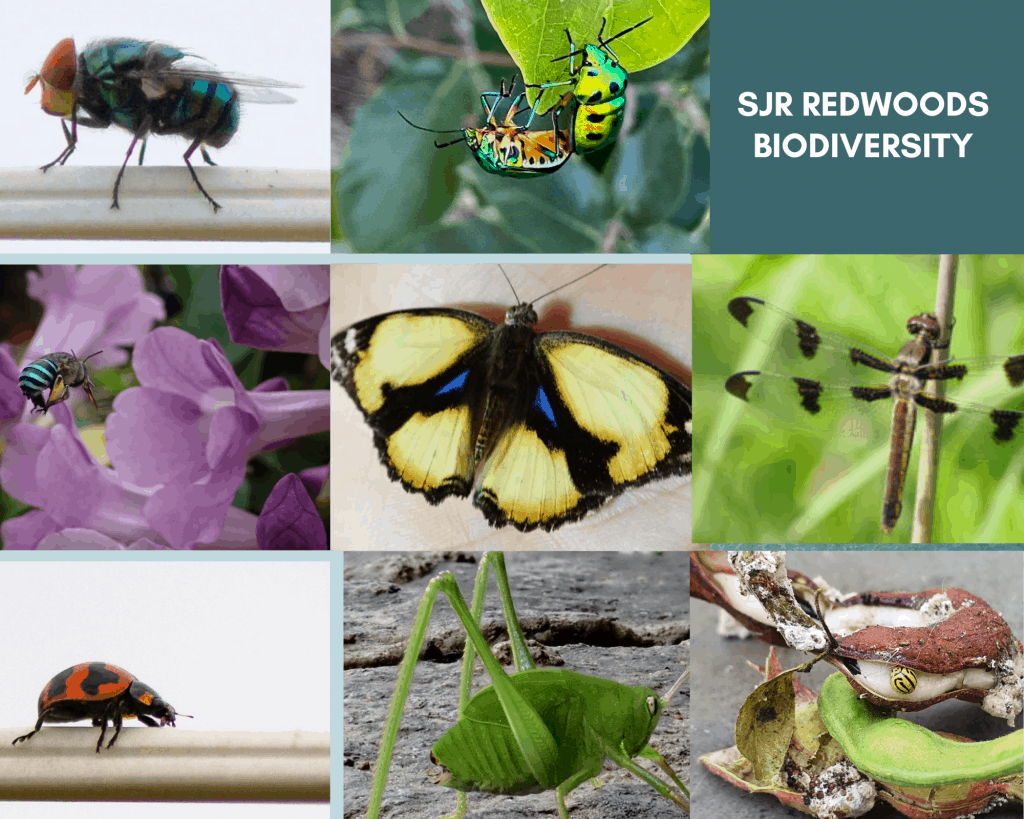
Sustainability:
- With good planting techniques such as the three-layer approach, soil fertility improved.
- Evaporation of moisture from soil decreased, which reduced our water use for gardening by 70%. We also use recycled water from our sewage treatment plant for gardening, which reduces our dependence on fresh water.
Happy residents:
- A seed bank and nursery were created for the benefit of residents
- Harvest from the community garden/food forest is open to all residents, free of cost
- Other materials like compost are shared with residents and the neighbourhood free of cost
- Greens such as Amrutaballi/Giloy, considered as medicines as per Ayush protocol, were supplied to some hospitals during the pandemic
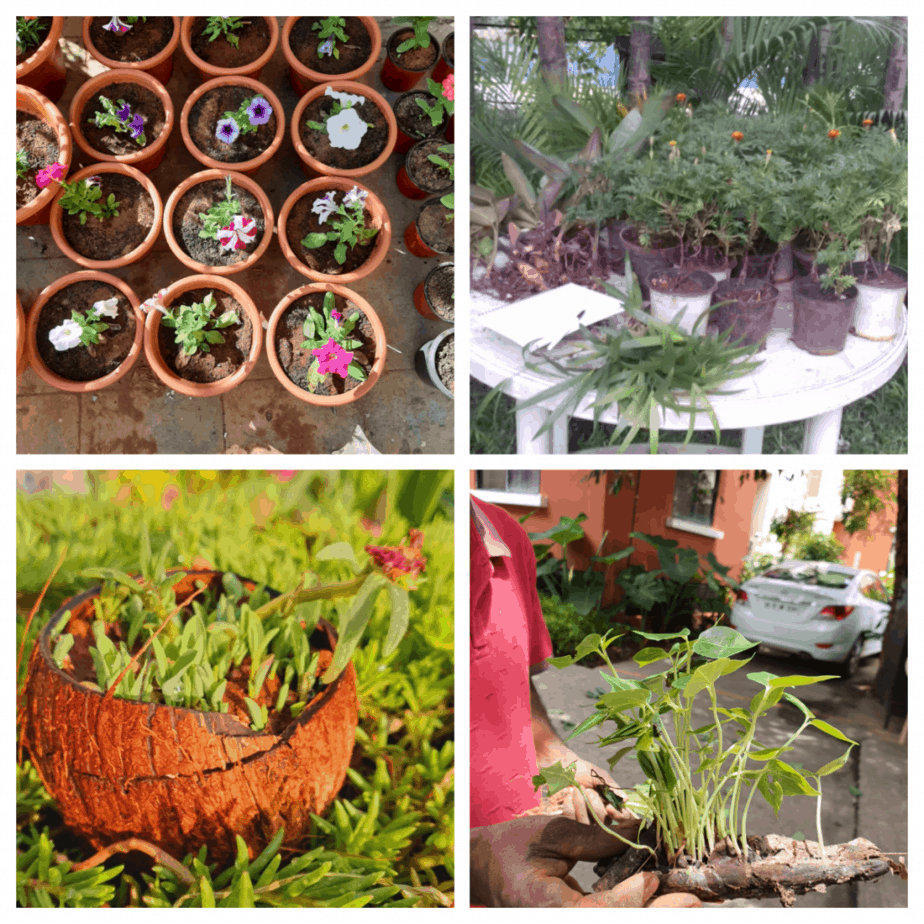

Fostering biodiversity:
- Conscious and seasonal pruning of plants and trees helped in various species of birds such as bulbul, kingfisher, eagles, parrots and sparrows returning to our locality.
- This in turn led to a reduction in the pigeon population.

Overall, the increase in foliage has led to better oxygen supply and ecological balance.
Sameer says, “We’ve managed all our garden waste internally and yielded rich compost and better soil, seen a growth in the foliage, diversity in plants. We have had lots of food harvested and shared with residents. The garden supports more life. And we’ve not had to spray any chemicals, surely creating healthier surroundings for our kids.”
He adds that residents are now a lot more in touch with nature. “Our common spaces have become a matter of pride. I think we should adopt this model widely, and move away from the common approach to landscaping that is purely ornamental and out of sync with nature.”
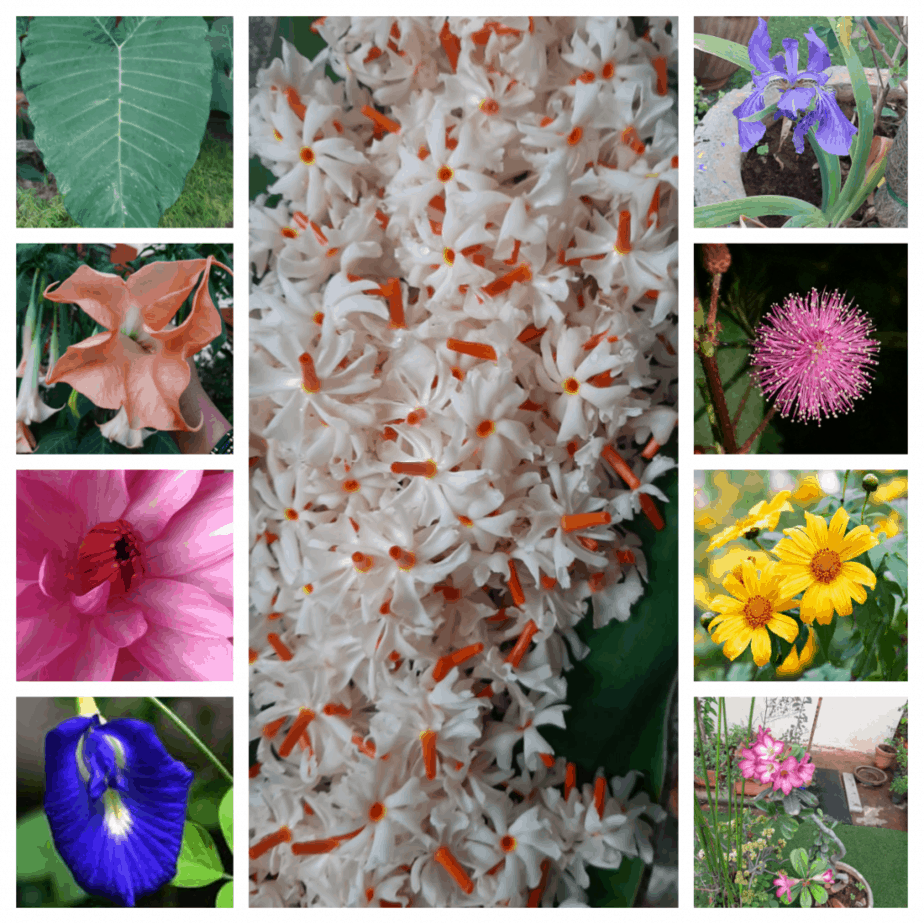
Our learning is that nurturing biodiversity is the key to correcting the imbalance in our ecosystem. And that if we protect nature, we are in turn protected.
[The SJR Redwoods community garden team can be contacted at redwoodsgardenteam@gmail.com]
This example should be followed by all apartments which have space for such activity to be carried out.
The effort by the residents of SJR Redwoods is commendable. The greenery is awesome. Congratulations. They are lucky to have so much common area.
Please share the contact details of the SJR Redwoods community garden team
Hi Vinod,
You can contact the team at redwoodsgardenteam@gmail.com
Regards
-Ed
Kudos to SJR redwood residents for doing this wonderful work in making garden ,reduce, recycling the waste,
Making Green Cover.
Good concept. Worth duplicating in other complexes.
Wow guys great job keep up the good work mother earth needs ppl like u thank u god bless all lots of luv
Dear Redwoods Team – Here is a shout out from Westend Heights, Begur. You are doing commendable job !! Well done. At Westend Heights, we too are composting inhouse garden waste in mesh chambers and not a single green leaf has gone out of the complex in past 7 months. We are making vermi compost. And our cost of load-out too, has been avoided significantly.
Together, we are a CLUB !!! Rock on !!
ARISE! CITIZENS OF BENGALURU!!
On the one hand citizens are trying to be eco-friendly, and on the other… GOVT IS TRYING TO ACQUIRE A LARGE PORTION OF NAGAWARA LAKE IN THE NAME OF IMPROVING THE CITY’S INFRASTRUCTURE.. How many lakes of BENGALURU have already been ruined and citizens are already paying for the shortsifhted planning of yesteryears.
Do we want a New York, or California here??? Not only do we pay through our nose in the form of taxes. Later on we and our children will pay for the environmental costs. And Govt will tax us more in the name of setting right what has gone wrong..
Very interesting and fascinating, it’s a roll model project to any apartment,
I was thinking why waste land on land scaping and growing useless shrubs when it can be used to grow pplants like bannana, papaya, coconut, guava, pomegranate, etc and green leafs like spinach, corriandur, curry leaves etcNow I find that Redwoods have done it. All apartments should follow it.
Laudable work by RED WOOD TEAM
Oh my gosh! Awesome effort team! So inspiring.